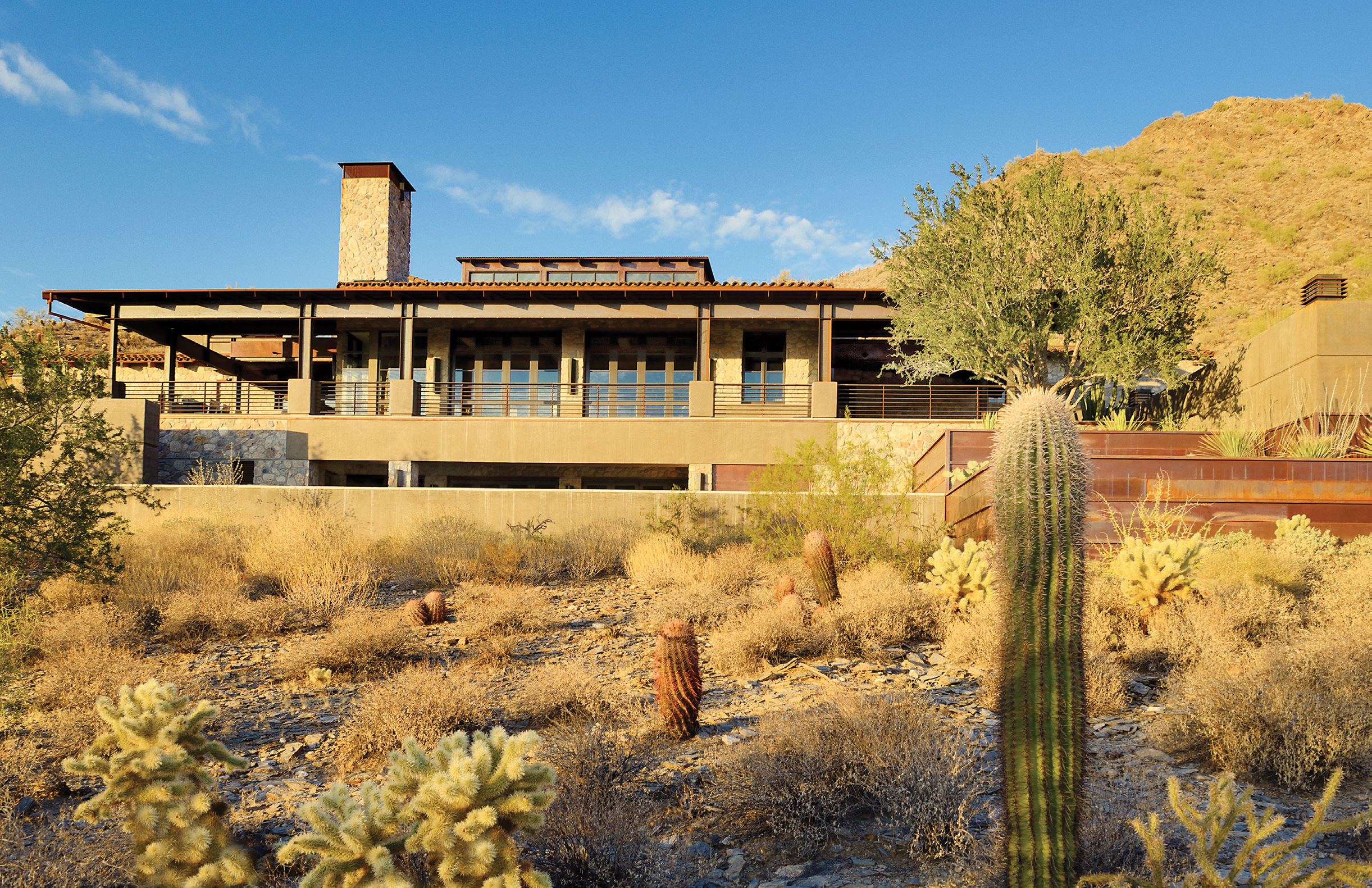
06 May Sonoran Desert Villa
AT THE BASE OF THE MCDOWELL MOUNTAINS IN ARIZONA, the views of the Sonoran Desert feel endless, and the cities of Scottsdale and Phoenix appear below as a carpet of sparkling light at nighttime. Here, at the DC Ranch, its founders declare that the created environment blends with the natural Sonoran Desert. On 4 acres, nestled into the hillside, a “dream team” worked for two years to construct a 7,440-square-foot villa that accomplishes that ideal, but with a sense of having been there for generations. Along with the homeowners, architect Bob Bacon, builder Thomas Archer, and interior designer John G. Martin created a house that fits into the landscape and the homeowners’ lifestyles just right.
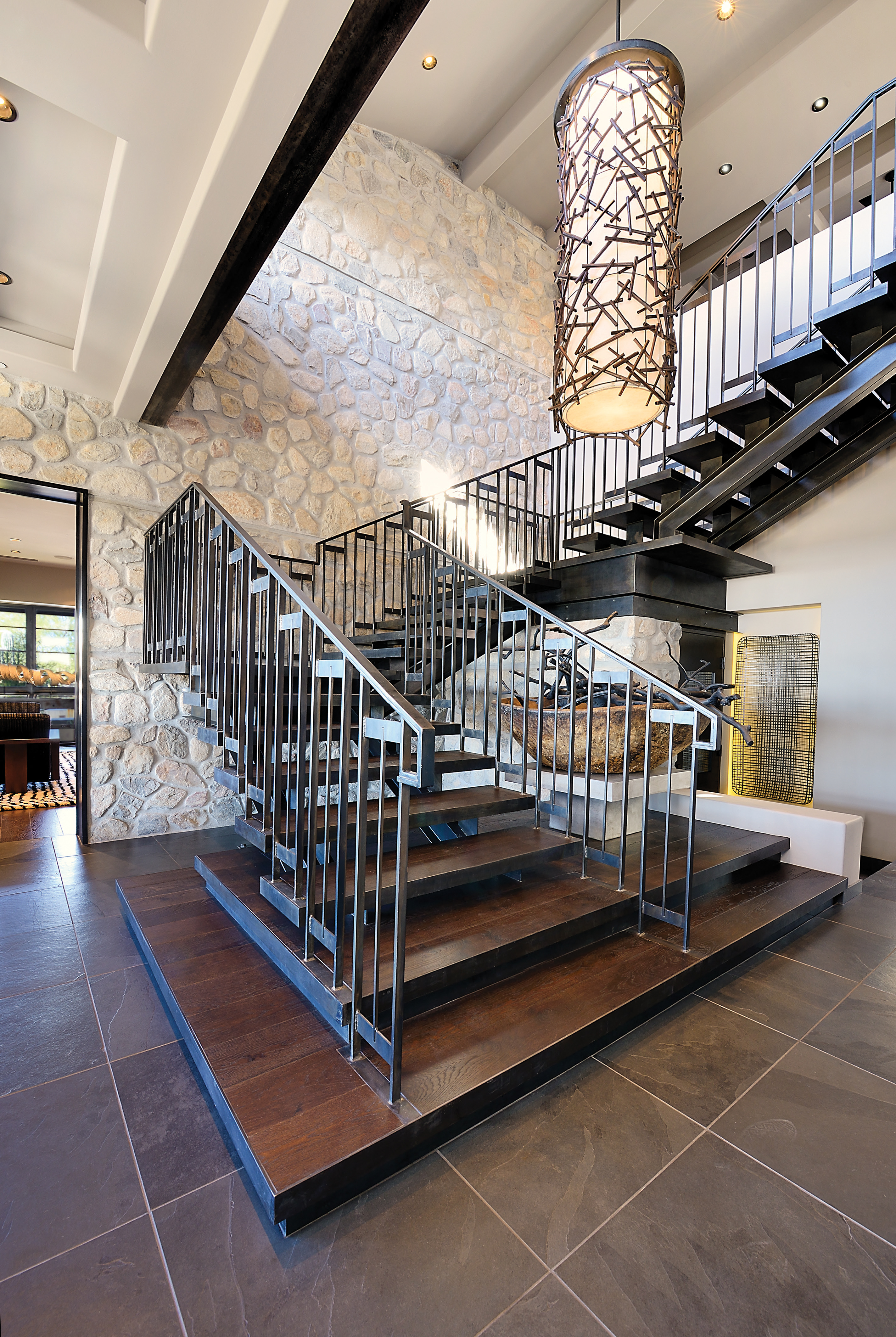
Sean Goldenstein, of Studio Iron in Apache Junction, Arizona, fabricated the staircase, which was designed by architect Bob Bacon. It’s accented by a light fixture from Turner | Martin Design that was custom crafted by artisans in Bali.
The villa’s essence of timelessness is due in part to Bacon’s benchmark guidelines: “Build with minimal visual impact and only construct timeless, functional works of architectural art — buildings that respect the climate and cultural heritage of their location while preserving the natural beauty of their environment.” He explains that part of his building credo, and of paramount importance, is that the structure doesn’t dominate the landscape.
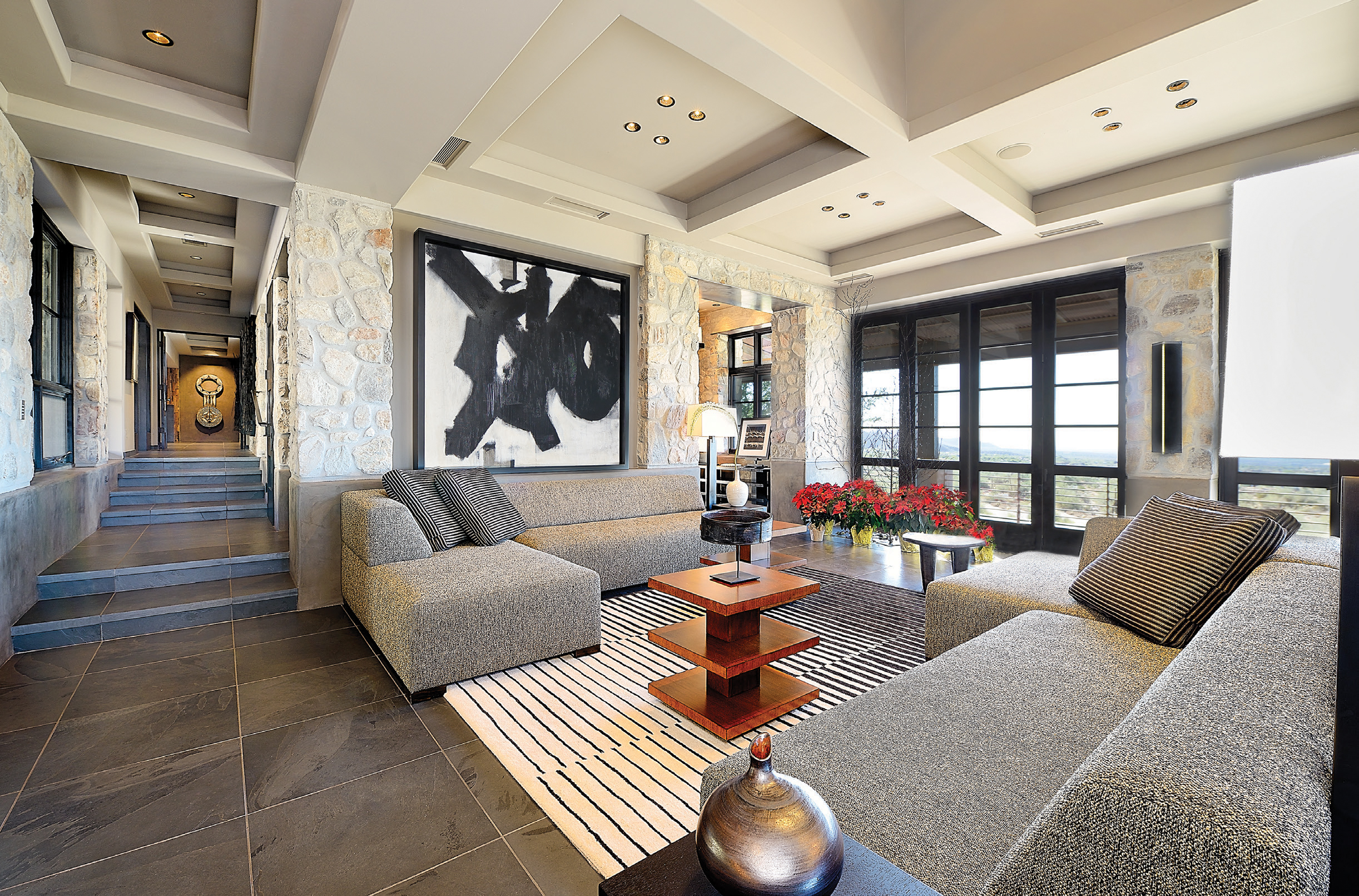
A painting by Loren Yagoda, sourced from Costello Gallery in Scottsdale, Arizona, anchors the living room. The sectional sofa is from Turner | Martin Design with custom fabric from Grenard’s Upholstery.
“Primary elements to consider are the low-to-high ratios: the highest trees that grow in the desert are around 24 feet in height,” Bacon says. Thus, the villa’s roof extends no more than 24 feet, and the structure unfolds in multiple masses, with its guest casitas appearing to be separate volumes while still a cohesive part of the main home.
The villa is constructed of stone, steel, and concrete, with a roof of clay tile and corrugated steel. Bacon explains how the materials are conducive to the desert environment: “The common intrinsic characteristic is zero maintenance. I draw inspiration from ranches and from mining, which is where the steel and concrete come from. Stone is such a durable material and visually has the potential to tie in with the land outcroppings as well as the mountains.”
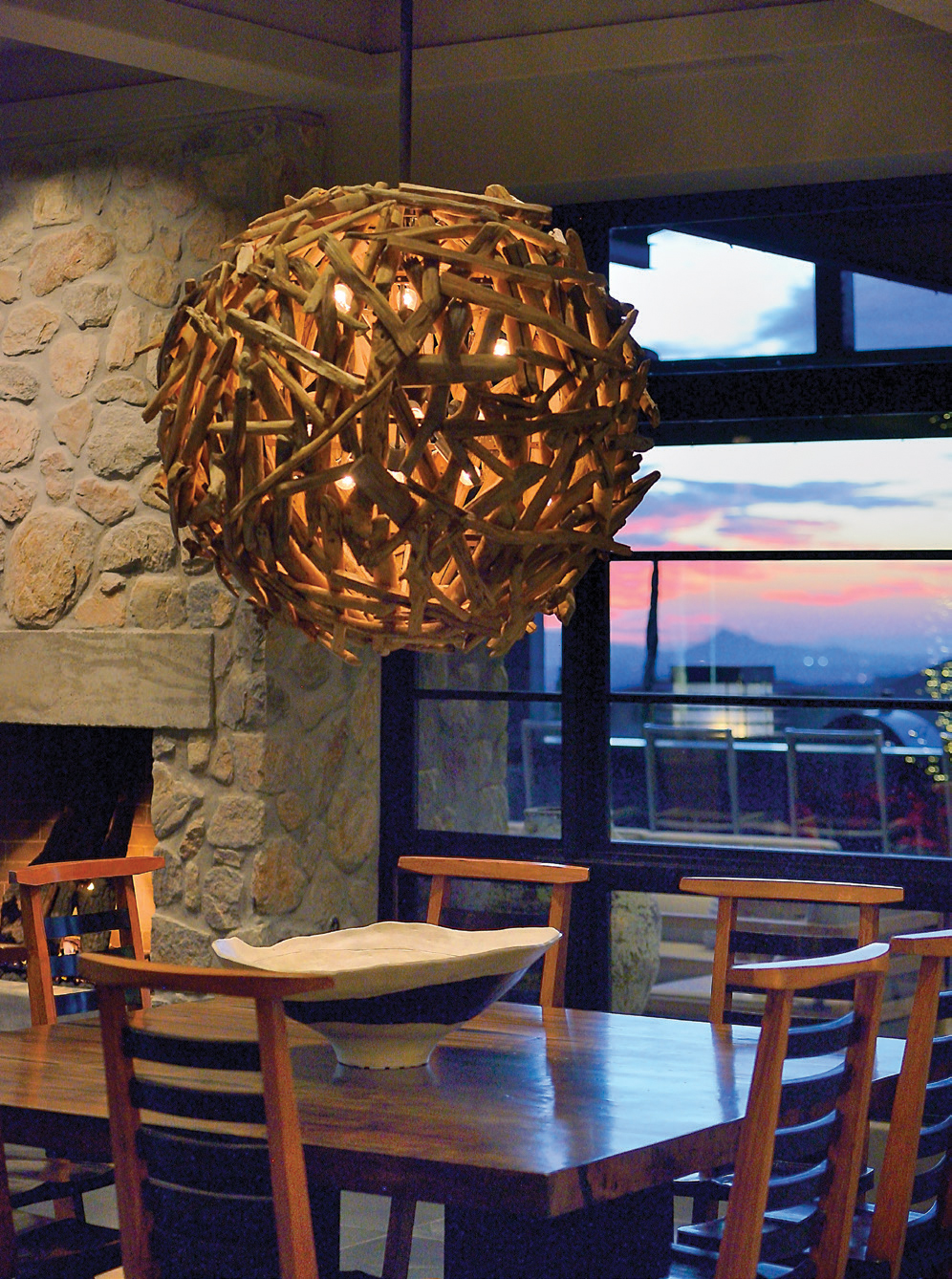
An organic light fixture from Restoration Hardware hangs above a Taracea dining table; the chairs are from Turner | Martin Design and were handcrafted in Bali.
The villa was designed with the desert sun and wind in mind. “Afternoon updrafts on a mountainside are a natural part of the environment,” Bacon says. “And Southwest winds that bring monsoons need to be considered.” Outside the kitchen and butler’s pantry, a covered courtyard is usable year-round for outdoor meals. Breezeways carrying cool air wend their way past an upper-level office and around the guest casitas.
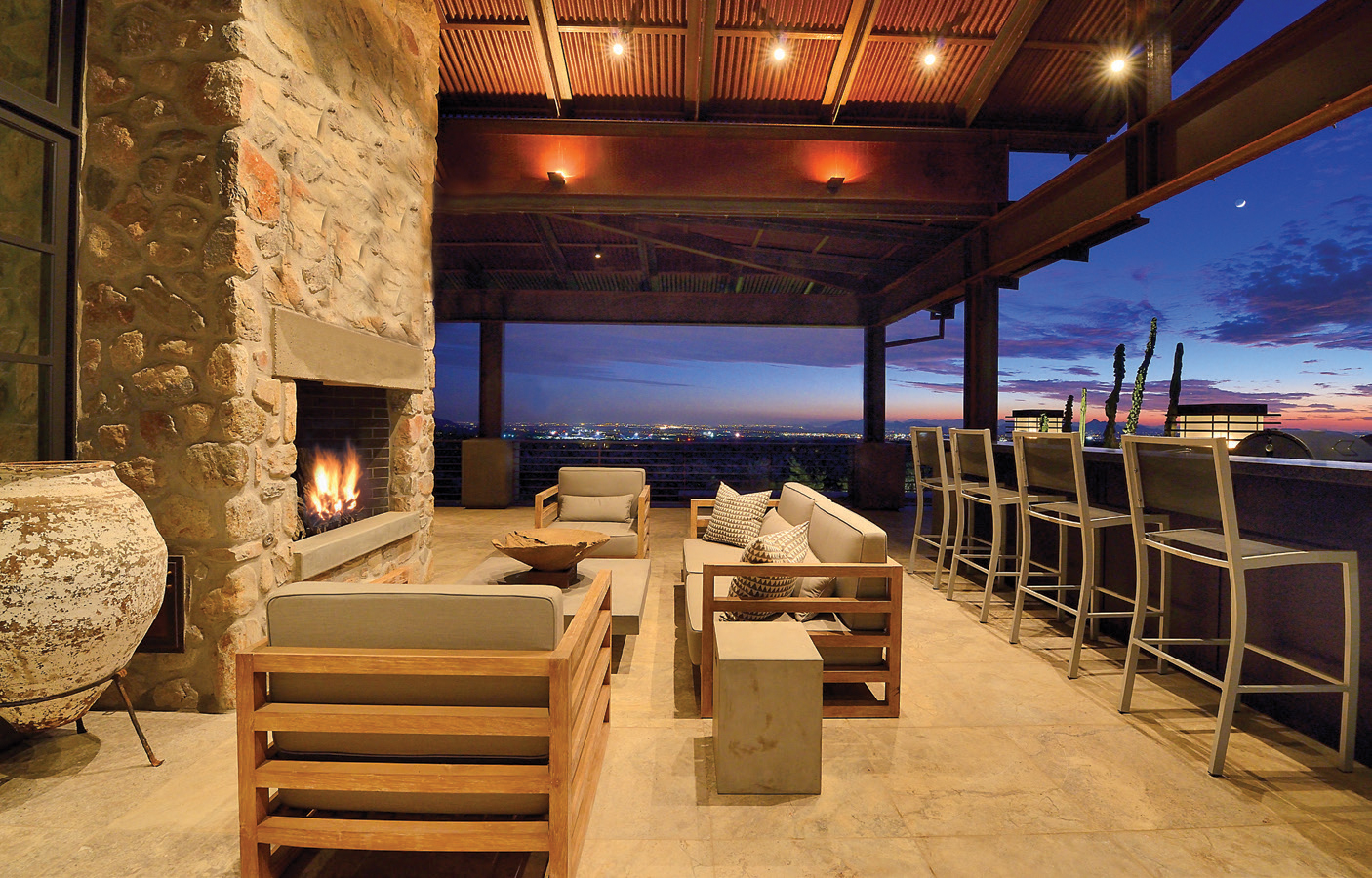
The spacious patio overlooks the city lights. The outdoor furniture is from Teak Warehouse and a Grecian urn sits off to the left.
Water features provide additional cooling in the desert villa. A zero-gravity pool that looks to the west captures the sunsets magnificently. And a lap pool just outside the fitness room provides calming water sounds when the gym walls are opened.
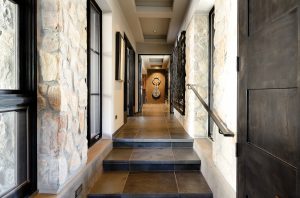
An ancient African shield adorns the far wall of a hallway. The interior and exterior walls are DC White Stone, a natural stone found on the original ranch property.
The homeowners chose interior designer John G. Martin, of Martin | Turner Design, to be an integral part of the design-build effort, as they’d worked with him before on a previous resort home. “His palette is organic, comprised of natural tones which create an engaging environment,” the homeowner says. Perhaps part of the allure of Martin’s designs relates to his artistry, as both a painter and a sculptor. His use of materials, such as teak roots and ebonized branches, add natural elements that define spaces and offer a timeless nature. Other factors that landed Martin on the dream team include the consistency with which he employs design elements: Fixtures and countertops are uniform throughout the villa, and fabrics on soft furnishings are often repeated, offering a resort-like feel.
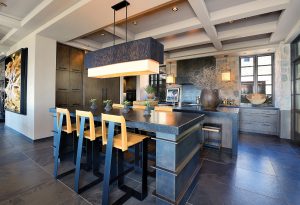
Perfect for entertaining, this high-top steel table was designed by Turner | Martin Design and fabricated by Sean Goldenstein of Studio Iron. The chairs are by Skram Furniture Company, and the lighting is from Sequoia Santa Fe.
Organic materials were used throughout. For the floors of the villa, Martin chose a black slate, trimmed with oak. In a powder room on the main floor, he specified slate for an accent wall that highlights a bamboo vanity topped with a petrified wood sink. Natural fiber rugs provide softness underfoot. And following the organic theme, Martin also chose an acoustic teak wall treatment for the villa’s home theatre.
Rounding out the design-build team was boutique builder Thomas Archer, whom the homeowners refer to as “God’s gift to building.” According to Martin, it takes someone who can understand Bacon’s designs to execute them. “Bacon is very cognitive; he works a lot in his head,” he says. “Tom Archer gets it.”
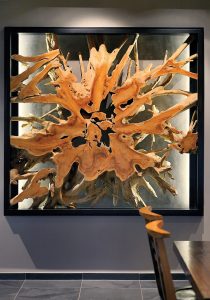
Maintaining the interior design’s natural theme, a teak root from Indonesia embellishes the dining room wall.
No stranger to constructing structures in the desert, Archer says he’s built more than 10 Bacon-designed homes in his 33 years of business. “In Bob’s drawings, every pencil line has a meaning. You have to follow the plans exactly to accomplish his vision. His design fit into the hillside perfectly and delivered exactly what the homeowners wanted in a living environment,” Archer says. “It is more challenging to build a Bacon home but more rewarding. Unbelievably rewarding.”
- On display are Miao silver neck collars from the province of Guizhou in southwest China.
- The villa’s pool was designed by Sarto Pools; it’s accented by lighting that was designed by Turner | Martin Designs and fabricated by Gabe Rippel of Santa Fe, New Mexico.
- A keepsake saddle by Keyston Brothers of San Francisco (established in 1868) enhances an office.
Archer adds that the dream team also included the homeowners, who, he says, were the reason the project was so much fun and such a success. “It was like everyone came together for everybody,” he says.
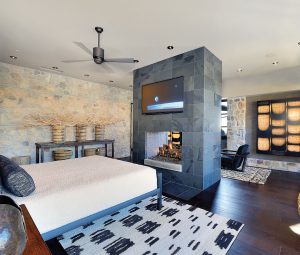
The master suite’s sitting area is separated from the sleeping area by a two-way fireplace. A painting on vinyl by Eric Gonzales ties the bedroom together and was sourced from Costello Gallery.
The contemporary mountainside villa sits next to a preserve. Desert flora ameliorates any harshness one might perceive in the desert landscape. Yellow-blooming palo verde trees brighten the surroundings in the springtime, just as the rains bring grasses to life. “The mountain gets so green at times,” says the homeowner, “that it makes one feel as if they are in Hawaii.”





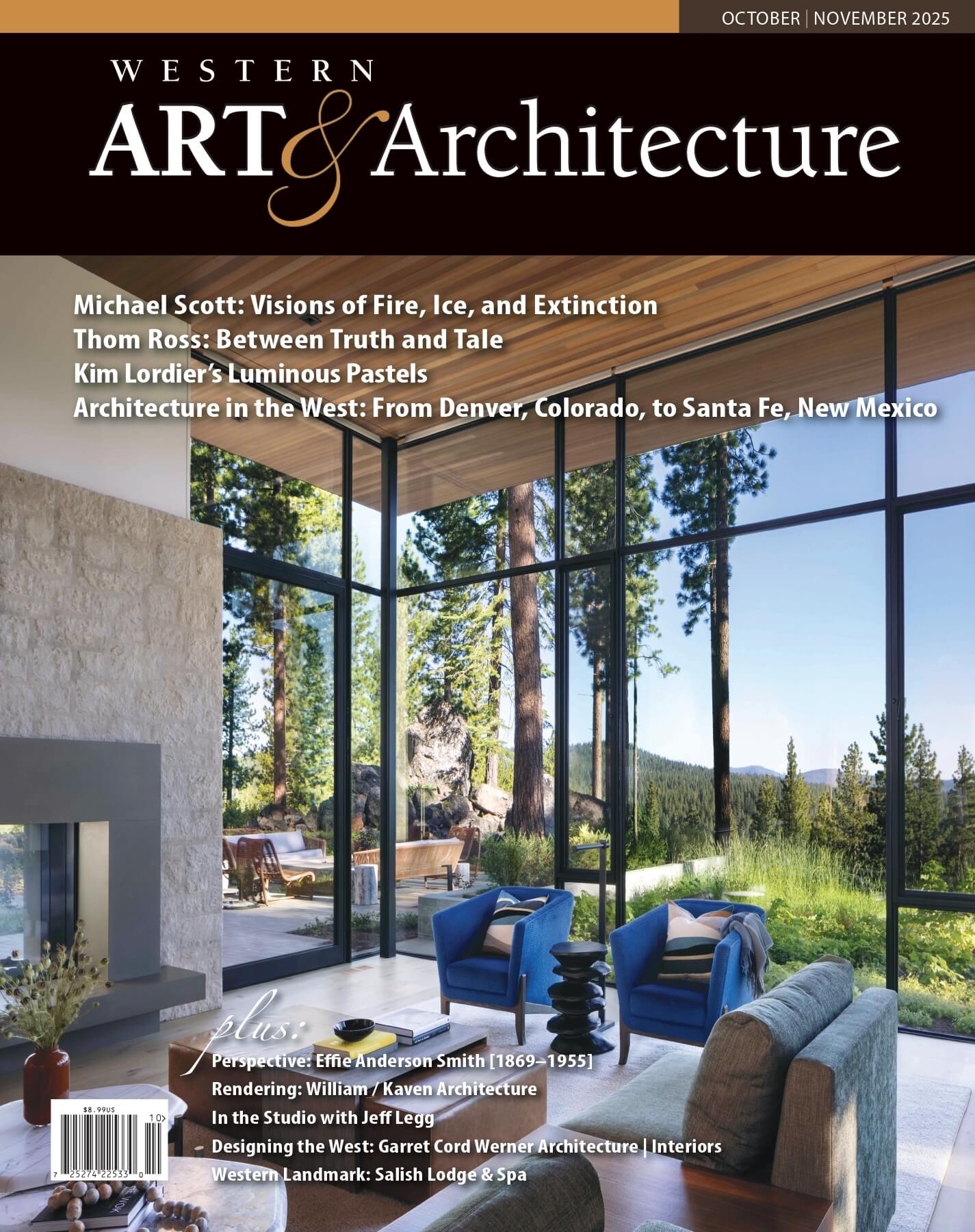
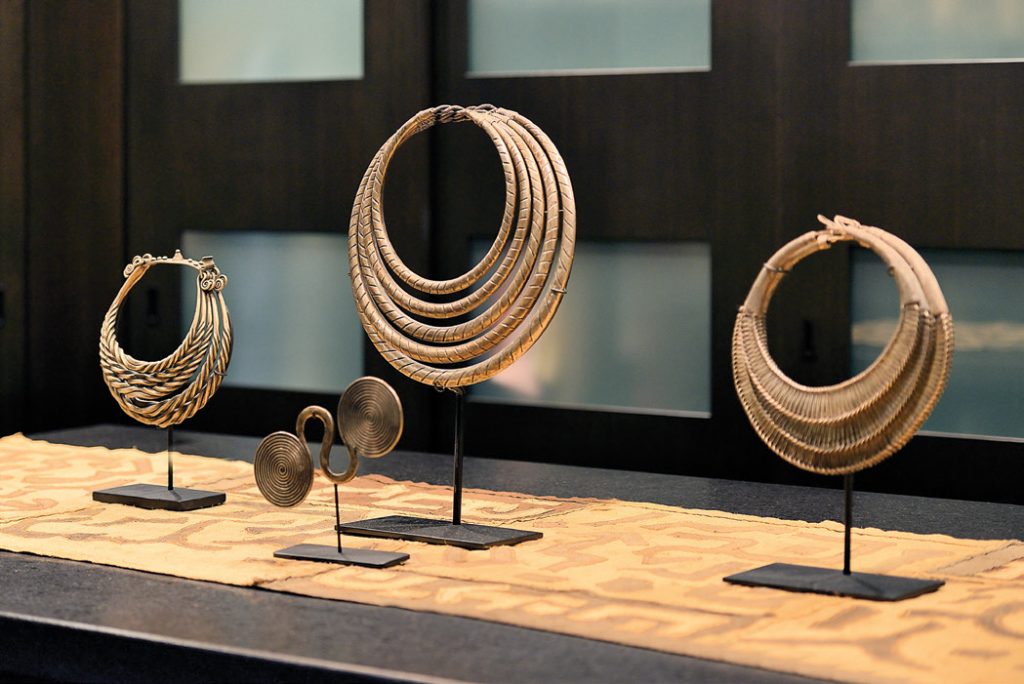
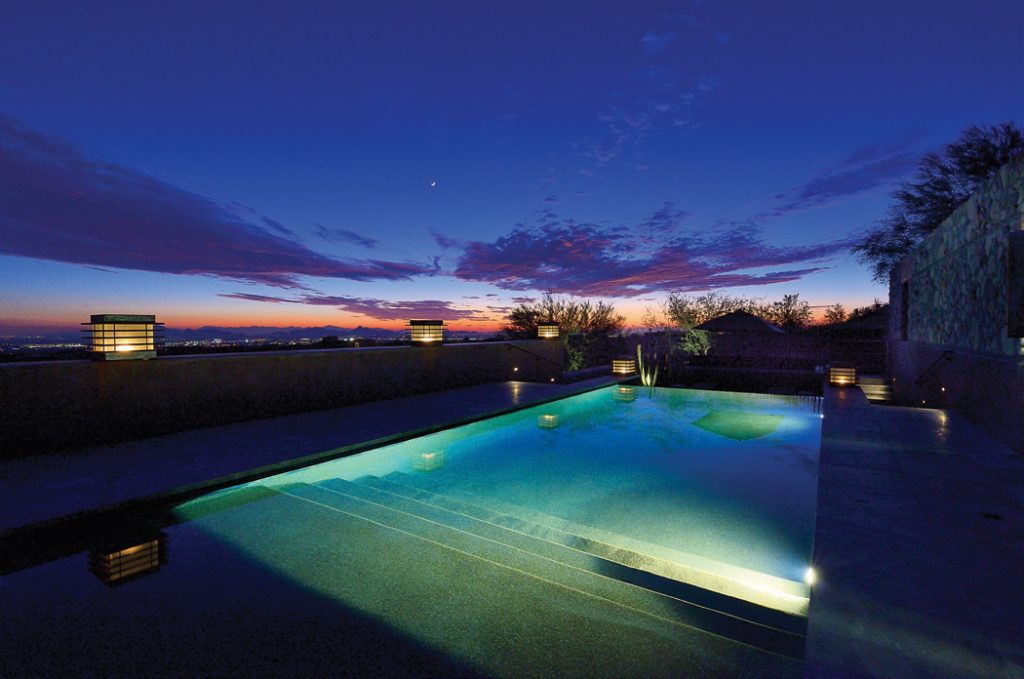
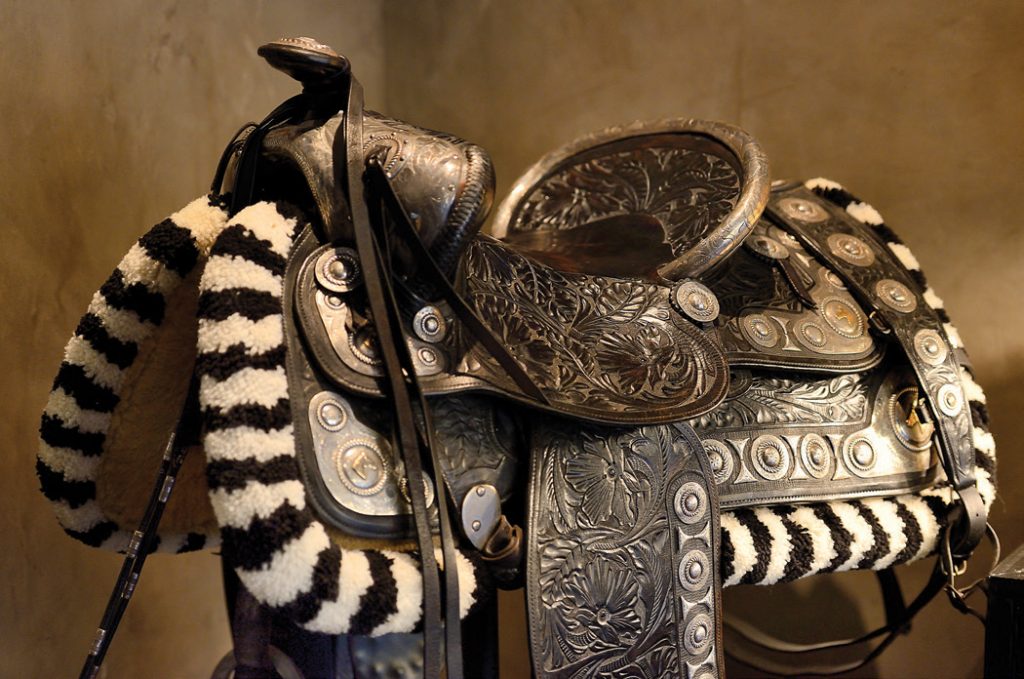
No Comments